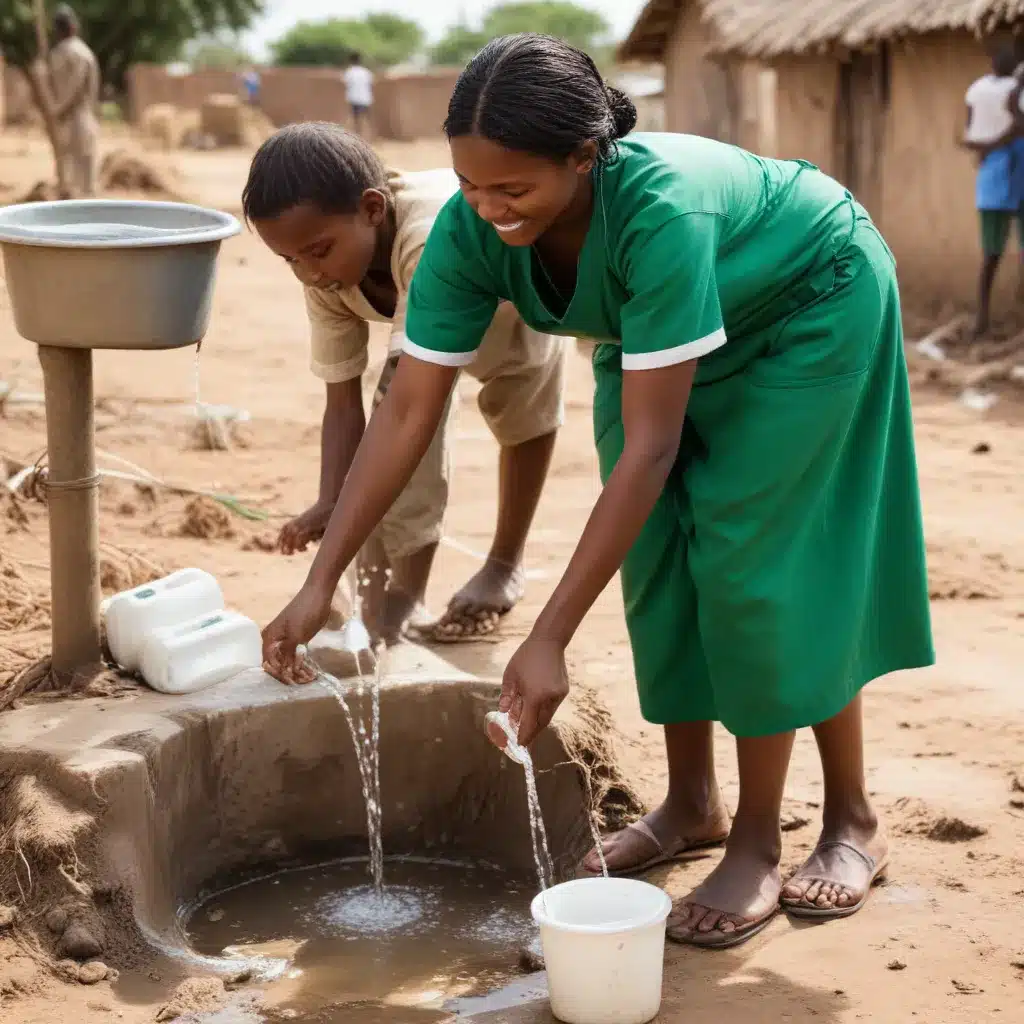
The Origins and Transformation of WASH
The provision of safe water, adequate sanitation, and proper hygiene practices has long been recognized as a cornerstone of public health and sustainable development. The modern WASH (Water, Sanitation, and Hygiene) sector has its roots in the late 19th century, when the link between waterborne diseases and contaminated water supplies became increasingly clear. Over the decades, WASH has evolved from a narrow focus on technological solutions to a more holistic, community-driven approach that addresses the complex social, economic, and environmental factors influencing access to these essential services.
In the early 20th century, the WASH sector was primarily concerned with the construction of water and sanitation infrastructure, such as piped water networks and sewerage systems. This technicalisation approach aimed to provide standardized, universally applicable solutions to improve public health. However, these top-down, one-size-fits-all interventions often failed to account for local contexts and community needs, leading to limited long-term sustainability.
As the global development landscape shifted in the latter half of the 20th century, the WASH sector began to grapple with the need for more universalised and responsibilised approaches. The United Nations’ Millennium Development Goals (MDGs), launched in 2000, set ambitious targets for expanding access to safe water and basic sanitation, driving significant progress in many regions. However, the MDG framework was critiqued for its emphasis on quantifiable outcomes, which led to a metricisation of WASH interventions that sometimes prioritized short-term outputs over long-term, equitable, and sustainable impacts.
The Shift Towards a Holistic WASH Approach
The transition to the Sustainable Development Goals (SDGs) in 2015 marked a pivotal moment in the evolution of the WASH sector. SDG 6 specifically focuses on ensuring access to safe water and sanitation for all, recognizing the fundamental role of WASH in achieving broader development objectives. This shift has inspired a more holistic, multisectoral approach that considers the interlinkages between WASH, health, nutrition, education, and environmental sustainability.
One key aspect of this transformation is the growing emphasis on community engagement and advocacy. Successful WASH interventions now prioritize the active participation of local communities in the planning, implementation, and management of services. This approach empowers communities to take ownership of their water and sanitation systems, ensuring long-term sustainability and responsiveness to their unique needs.
Moreover, the WASH sector has increasingly recognized the importance of targeting marginalized and vulnerable populations, such as women, children, and people living in informal settlements or rural areas. Ensuring equitable access to WASH services is not only a matter of public health but also a fundamental human right.
The Challenges and Opportunities in the WASH Sector
Despite the progress made in recent decades, the WASH sector continues to face significant challenges. Access to safe water, sanitation, and hygiene remains elusive for billions of people worldwide, with the COVID-19 pandemic further exacerbating existing disparities. Water scarcity, pollution, and the impacts of climate change pose growing threats to WASH services, underscoring the need for more sustainable and resilient solutions.
To address these challenges, the WASH sector has embraced a range of innovative approaches and strategies. These include the adoption of nature-based solutions for water resource management, the integration of digital technologies for enhanced monitoring and service delivery, and the promotion of circular economy principles to reuse and recycle water and waste.
Equally important is the strengthening of cross-sectoral collaboration and multi-stakeholder partnerships. By working closely with sectors such as health, education, and environmental protection, the WASH sector can leverage synergies, amplify its impact, and advocate for more robust policies and investments.
The Way Forward: Empowering Communities and Advancing Sustainability
As the WASH sector continues to evolve, the focus is shifting towards empowering communities, fostering sustainability, and driving transformative change. This approach involves:
-
Strengthening Community Capacities: Investing in the skills, knowledge, and leadership of local communities to manage their own water and sanitation systems, ensuring long-term sustainability and responsiveness to their needs.
-
Promoting Gender Equality and Inclusion: Recognizing the critical roles of women, girls, and marginalized groups in WASH and designing interventions that address their unique needs and barriers to participation.
-
Advancing Innovative Financing Mechanisms: Exploring alternative funding sources, such as blended finance, social impact investing, and community-based savings schemes, to complement traditional development aid and government budgets.
-
Integrating WASH with Other Sectors: Fostering synergies between WASH and sectors like health, education, agriculture, and environment to create holistic, cross-cutting solutions that address the complex challenges facing communities.
-
Scaling Up Evidence-Based Practices: Leveraging data, research, and learning to identify and scale up effective WASH interventions, while continuously adapting to changing contexts and emerging needs.
By embracing these strategies, the WASH sector can empower communities, drive sustainable progress, and contribute to the realization of the Sustainable Development Goals and the vision of a more equitable, healthy, and prosperous world for all.
Conclusion: The Ongoing Journey of the WASH Sector
The WASH sector has come a long way since its early days, evolving from a narrow focus on technological solutions to a more holistic, community-driven approach. This journey has been shaped by global development trends, the recognition of WASH as a fundamental human right, and the imperative to address complex, interconnected challenges.
As the world continues to grapple with issues of water scarcity, sanitation, and hygiene, the WASH sector must remain agile, innovative, and committed to empowering communities. By fostering cross-sectoral collaboration, advancing evidence-based practices, and championing gender equality and inclusion, the WASH movement can continue to drive transformative change and contribute to a more sustainable and equitable future for all.
To stay informed and get involved in the latest WASH initiatives, we encourage you to visit the Joint Action for Water website and explore the wealth of resources and opportunities available.

